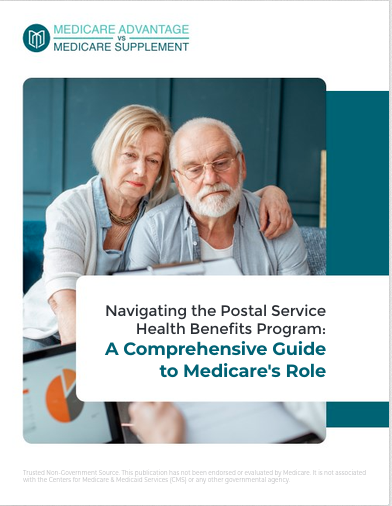Key Takeaways
-
Employer health plans and Medicare can work together, but the coordination depends on factors like employer size and your current work status.
-
Timing your Medicare enrollment is crucial to avoid late penalties or gaps in coverage when transitioning from an employer health plan.
Understanding Coordination: Employer Health Plans and Medicare
When you’re approaching Medicare eligibility, understanding how it fits with your existing employer health coverage is essential. The interaction between the two can save you money, ensure seamless coverage, and protect you from unexpected costs. But the rules can get tricky, and they’re not the same for everyone.
1. Employer Size Determines the Rules
One of the most critical factors in how your employer health plan works with Medicare is the size of your employer. Here’s why this matters:
-
Employers with 20 or more employees: Your employer health plan is considered your primary insurance, meaning it pays first. Medicare serves as secondary coverage, kicking in to cover what your employer plan doesn’t.
-
Employers with fewer than 20 employees: Medicare becomes your primary insurance, and your employer plan pays second. This means Medicare is expected to handle the bulk of your healthcare costs, so enrolling on time is essential.
If you’re not sure where your employer falls, it’s a good idea to ask your HR department. They can clarify how your plan coordinates with Medicare.
2. Timing Matters: Avoiding Late Enrollment Penalties
Medicare enrollment windows can feel like a maze, but missing them can result in penalties that stick with you for life. Here are the key timelines you need to know:
-
Initial Enrollment Period (IEP): This is a seven-month window around your 65th birthday (three months before, the month of, and three months after). If you’re not covered by an employer plan, this is when you’ll need to enroll in Medicare Parts A and B.
-
Special Enrollment Period (SEP): If you’re still working and have coverage through an employer, you can delay Medicare without penalties. You’ll have an eight-month SEP to enroll in Medicare after your employment or coverage ends.
-
General Enrollment Period (GEP): If you miss your IEP and SEP, you’ll need to wait until the GEP, which runs from January 1 to March 31 each year. Coverage starts July 1, and late enrollment penalties may apply.
To avoid complications, make sure you understand which window applies to you.
3. Medicare Part A Is Usually Free—But Not Always
Most people are eligible for premium-free Medicare Part A if they’ve worked and paid Medicare taxes for at least 10 years (40 quarters). If you’re not eligible for premium-free Part A, you’ll need to weigh the costs against your current employer coverage. Part A primarily covers inpatient care, so if your employer plan has limited hospital benefits, enrolling in Part A could be a wise move.
4. Should You Delay Medicare Part B?
Medicare Part B covers outpatient services, like doctor visits and preventive care, but it comes with a monthly premium. Whether you delay Part B depends on your employer coverage:
-
You might delay Part B if: You’re still working, and your employer plan provides comprehensive outpatient coverage at a lower cost than Medicare.
-
You should enroll in Part B if: Your employer plan requires Medicare to pay first, or if it’s not considered “creditable” coverage.
Remember, delaying Part B without qualifying coverage can result in lifelong penalties, so it’s important to assess your situation carefully.
5. Prescription Drug Coverage: Employer Plans vs. Medicare Part D
Medicare Part D provides prescription drug coverage, but if your employer plan includes drug benefits, you might not need Part D immediately. However, it’s critical to ensure your employer plan’s drug coverage is “creditable,” meaning it’s at least as good as Medicare’s standard Part D coverage.
-
If your employer plan isn’t creditable, you could face penalties if you delay Part D enrollment.
-
You’ll receive a notice from your employer annually stating whether your plan is creditable. Keep this notice as proof, as you may need it later.
6. COBRA Coverage Is Not a Substitute for Medicare
If you’re retiring or leaving your job, you might consider continuing your employer coverage through COBRA. However, COBRA isn’t considered creditable coverage for Medicare, so it’s not a viable substitute.
-
If you’re eligible for Medicare when you leave your job, enroll in Medicare during your SEP to avoid penalties.
-
If you’re already enrolled in Medicare, COBRA can act as secondary coverage, but you’ll still need to pay COBRA premiums in addition to Medicare costs.
Relying solely on COBRA without enrolling in Medicare could leave you with gaps in coverage, so make sure you plan accordingly.
7. Spousal Coverage and Medicare
If you’re covered under your spouse’s employer health plan, the same coordination of benefits rules apply based on employer size. Additionally:
-
You may delay enrolling in Medicare if your spouse’s plan provides primary coverage.
-
When your spouse retires or loses employer coverage, you’ll qualify for a SEP to sign up for Medicare.
Keep in mind that your spouse’s retirement or job change can impact your Medicare enrollment decisions, so it’s essential to stay informed.
How to Ensure Smooth Coordination Between Plans
To make the most of your employer plan and Medicare, follow these steps:
-
Communicate with HR: Your employer’s HR department can explain how your health plan coordinates with Medicare and provide necessary documentation.
-
Review Creditable Coverage Notices: These annual notices confirm whether your drug coverage meets Medicare’s standards.
-
Plan Ahead for Transitions: If you’re nearing retirement, start planning your Medicare enrollment six months in advance.
-
Verify Costs and Benefits: Compare your employer plan’s benefits with Medicare to determine which options work best for you.
What Happens If You Delay Medicare?
Failing to enroll in Medicare on time can lead to financial penalties and coverage gaps:
-
Part B Late Enrollment Penalty: Adds 10% to your premium for every 12-month period you were eligible but didn’t enroll.
-
Part D Late Enrollment Penalty: Adds 1% of the national base beneficiary premium for every month you delayed coverage.
These penalties are permanent, so it’s crucial to avoid delays.
Common Scenarios and Solutions
Here are some situations you might encounter:
-
You’re 65, still working, and have an employer plan: Confirm whether your employer plan is primary or secondary. Enroll in Medicare if it’s secondary.
-
You’re 65, retiring soon, and have COBRA or retiree coverage: Enroll in Medicare during your SEP to avoid penalties.
-
You’re 65, covered under your spouse’s employer plan: Check whether your spouse’s plan is primary and enroll in Medicare if needed.
Final Thoughts: Making the Right Choices
Navigating the relationship between employer health plans and Medicare can feel overwhelming, but understanding the basics can help you make informed decisions. By considering factors like employer size, creditable coverage, and enrollment timelines, you can ensure seamless coordination between your plans and avoid unnecessary costs or penalties.










